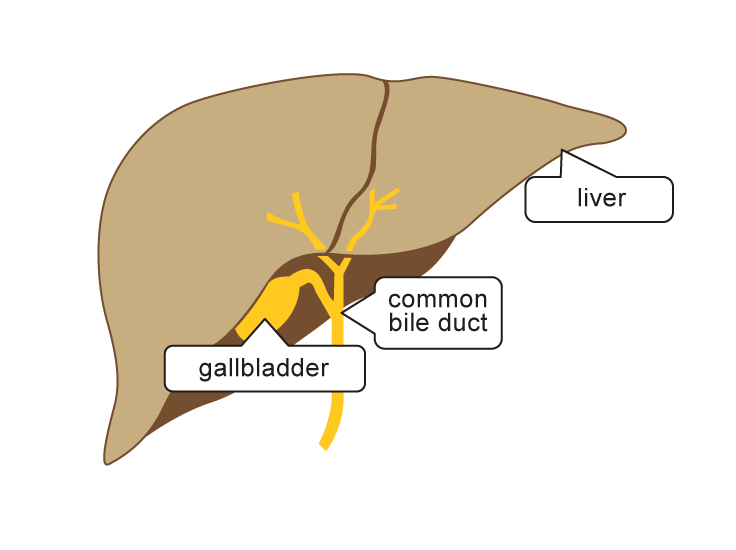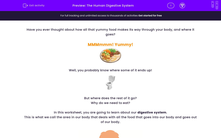Have you ever thought about how all that yummy food makes its way through your body, and where it goes?

Well, you probably know where some of it ends up!

But where does the rest of it go?
Why do we need to eat?
The digestive system is what we call the area in our body that deals with all the food that goes into and out of our body.

The mouth is the first part of the digestive system. Our teeth break down the food into smaller pieces. The food is mixed with saliva, which is made by the salivary glands. These are located in the sides of our mouth and under our tongue and are stimulated to release saliva into the mouth by the smell or arrival of food. Enzymes in saliva (spit) help to start to break the food down.

Once the food has started to break down, we can taste it on our taste buds. We swallow the food where it moves down the oesophagus (also spelt esophagus) and into the stomach.
The stomach, where gastric acid is made, will churn and break down the food into digestible molecules. The acid also helps to destroy any bacteria found in our food. The thick liquid of partly digested food and molecules is called chyme and this is passed into the duodenum, the first part of the small intestine for final digestion and absorption of food.

Digestive juices, or enzymes, made in the pancreas, enter the duodenum and help to further break down the chyme. The food molecules then pass through the rest of the small intestine. This is where the absorption process takes place - nutrients and minerals are absorbed through the lining of the intestine into the bloodstream and are transported around the body to be used for vital processes such as growth and respiration.

From here the blood passes through the liver, which cleans the blood, removing any toxins (poisons). The liver also makes a substance called bile which helps to break down any fats in our food. The gall bladder stores the bile that is made by the liver.
The large intestine is the final section of the digestive system.

Once the undigested food reaches the large intestine, there are hardly any nutrients left. However, the large intestine still has an important job to do. It takes any leftover water in the material and re-absorbs it into the body. Any undigested food then becomes hard, because the water has been removed. We call this faeces (also spelt feces) or poo and it's stored in the rectum before being passed out of the anus.
Bacteria in the large intestine also try hard to digest any final nutrients into the body, before we go to the toilet and it is too late!
That's a lot to take in, so don't worry if you can't remember it all!
You can look back at this introduction at any point by clicking on the red help button on the screen.
Let's get started.








